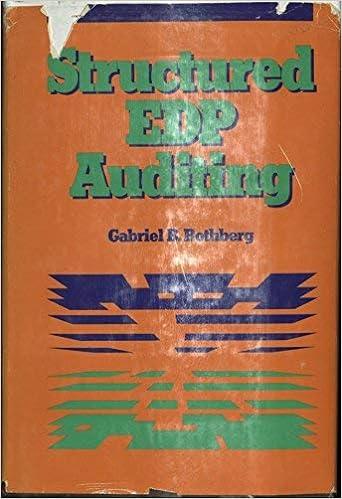Question
On April 1, 20X4, Hill Corp. issued 200 of its $1,000 face value bonds at 101 plus accrued interest. The bonds were dated November 1,
On April 1, 20X4, Hill Corp. issued 200 of its $1,000 face value bonds at 101 plus accrued interest. The bonds were dated November 1, 20X3, and bear interest at an annual rate of 9% payable semiannually on November 1 and May 1. What amount did Hill receive from the bond issuance?
| $194,500 | |
| $200,000 | |
| $202,000 | |
| $209,500 |
This Answer is Correct (Answer: D, $209,500)
The total proceeds on the bond issue equal the total bond price plus accrued interest. The latter amount is the cash interest between the bond issuance date (April 1, 20X4), and the most recent interest payment date before the bond issuance date (November 1, 20X3), a period of 5 months. The most recent interest payment date in this case is the bond date.
| Total bond price: 200($1,000)(1.01) | $202,000 |
| Plus accrued interest (5/12)($200,000)(.09) | 7,500 |
| Equals bond proceeds | $209,500 |
Question:
Can please explain in an easy way why $209,500 is the answer because I'm still not understanding why it is the answer regardless of the explanation above. Also why did they multiply by 1.01 for "Total bond price" in the above entry and why is the total proceeds on the bond issue equal the total bond price plus accrued interest? Please explain as easy as possible.
Step by Step Solution
There are 3 Steps involved in it
Step: 1

Get Instant Access to Expert-Tailored Solutions
See step-by-step solutions with expert insights and AI powered tools for academic success
Step: 2

Step: 3

Ace Your Homework with AI
Get the answers you need in no time with our AI-driven, step-by-step assistance
Get Started


